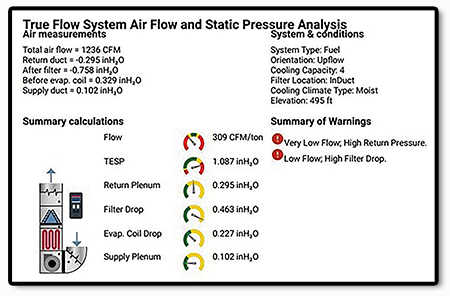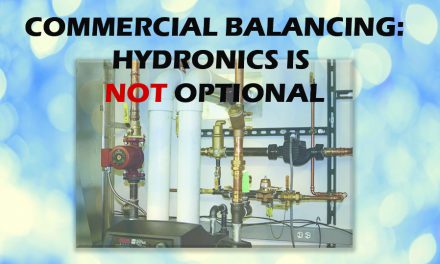Most things at which you succeed in life require lots of practice. This was true for me when it came to identifying problems with a duct system, attempting to convey the issues I found to the homeowner, then selling a solution that would benefit both my company and that customer.
I have gone through several iterations of this process, always trying to tweak it to produce the best results possible.

Since I consider myself a technician and not a salesman, my first instinct is to grab my tools and figure out the issue. The problem is that this will likely waste time and not solve any problems.
Start With Discovery
I always start with discovery. The discovery might happen when a customer calls in to complain about uncomfortable rooms in their home, or when you are on a service call unrelated to the duct system, and you find a glaring issue.
I’ve learned over the years that a problem is not a problem unless the homeowner recognizes it. Ask many questions and have the customer elaborate on the issues experienced. Keep the spotlight on them.
When they say the system is loud, my follow-up question might be, “Loud enough that you have to turn up your TV volume when it is running?” If they say a specific room is uncomfortable in the summer, I might respond, “How uncomfortable is uncomfortable? Are you saying it’s off by a degree or two, or is it worse than that?”

I might also ask, “On a scale from one to 10, how uncomfortable are we talking?” If it is a problem worth solving, getting them to share their tale of woes won’t take much effort. This is when I recognize I have a potential job.
The next question is simple but essential: “If I can identify any items contributing to your issues, would you like me to provide you with repair options?” When they answer yes, I walk outside and grab my most powerful tools, a tape measure, a Ductulator, and my Trueflow Grid. I need to get an idea of the system’s operating condition.
My Trusty TrueFlow® Grid
My first step is to run the full workflow of the TrueFlow Grid.
The TrueFlow generates a customer-facing report showing the total external static pressure, system pressure drops, and airflow through the furnace or air handler. It will also identify weak links in the duct system.
Before showing the report to the homeowner, you must analyze the data and consider potential solutions. Let’s identify how much airflow this particular system needs. That is easy for air conditioning because the TrueFlow report gives us an idea of that, but what about the heating side?
Click Below to Go to the Next Page:



![High Performance Contracting: Summit 2018 Panel Discussion on Implementation [PART 2]](https://hvactoday.com/wp-content/uploads/2018/06/DSC_0613-Panel-Discussion-4c3-440x264.jpg)









Is this article available as a PDF?
How is it possible to do an accurate manual J on a house that is not new ?
Hey Scott, here is a link for the PDF of the issue: https://hvactoday.com/monthly-issue.
I think you are absolutely right; performing an accurate Manual J can be tricky on existing homes. I start off by referencing building codes that were active at the time the home was built. I also look at the windows and doors to see if they look like they have been replaced. If they have been, and the U-values and other data is unknown, then I use the generic tables in Man J.
There are also tricks to figure out how many panes of glass and so on. You can get really fancy and use a website called recalc.com.” They have a calculator where you can take the Delta T of a surface temperature and it will estimate the R value for you. Overall I would say performing a load calculation on an existing home is more of an art than a science. If the values are unknown, do your best to guestimate. So far I have not had any jobs that have come back to haunt me.